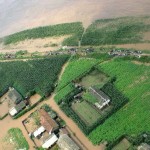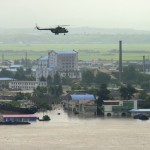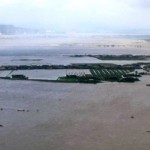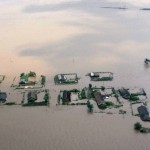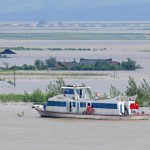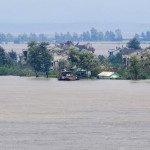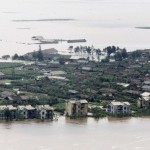UPDATE: UN World Health Organization has criticized the Amnesty report. According to the Associated Press:
The World Health Organization found itself Friday in the strange position of defending North Korea’s health care system from an Amnesty International report, three months after WHO’s director described medicine in the totalitarian state as the envy of the developing world.
WHO spokesman Paul Garwood insisted he wasn’t criticizing Amnesty’s work, but the public relations flap illustrated an essential quandary for aid groups in unfree states: how to help innocent people without playing into the hands of their leaders.
Amnesty’s report on Thursday described North Korea’s health care system in shambles, with doctors sometimes performing amputations without anesthesia and working by candlelight in hospitals lacking essential medicine, heat and power. It also raised questions about whether coverage is universal as it — and WHO — claimed, noting most interviewees said they or a family member had given doctors cigarettes, alcohol or money to receive medical care. And those without any of these reported that they could get no health assistance at all.
Garwood said Thursday’s report by Amnesty was mainly anecdotal, with stories dating back to 2001, and not up to the U.N. agency’s scientific approach to evaluating health care.
“All the facts are from people who aren’t in the country,” Garwood told reporters in Geneva. “There’s no science in the research.”
The issue is sensitive for WHO because its director-general, Margaret Chan, praised the communist country after a visit in April and described its health care as the “envy” of most developing nations.
Major global relief agencies have been quietly fighting for years to save the lives of impoverished and malnourished North Koreans, even as the country’s go-it-alone government joined the exclusive club of nuclear weapons powers and wasted millions on confrontational military programs.
Some groups may fear being expelled from the country if they are openly critical of Pyongyang, which is highly sensitive to outside criticism. Still, Chan’s comments were uncommonly ebullient.
Garwood and WHO spokeswoman Fadela Chaib insisted that Amnesty’s report was complementary to their boss’ observations, and sought to downplay Chan’s praise for North Korea. Instead, they focused on the challenges she outlined for North Korea, from poor infrastructure and equipment to malnutrition and an inadequate supply of medicines.
But whereas Chan had noted that North Korea “has no lack of doctors and nurses,” Amnesty said some people had to walk two hours to get to a hospital for surgery. Chan cited the government’s “notable public health achievements,” while Amnesty said health care remained at a low level or was “progressively getting worse.”
Asked Friday what countries were envious of North Korea’s health, Chaib said she couldn’t name any. But she highlighted the importance of maintaining the health body’s presence in the country, where officials do their best to save lives despite “persisting challenges.”
“We are an organization dealing with member states, and we respect the sovereignty of all countries,” Chaib said. “We need to work there to improve the lives of people.”
Sam Zarifi, head of Amnesty’s Asia-Pacific program, said the human rights group stood by its findings.
“We certainly have a lot of restrictions in terms of working in North Korea, but we did our best in terms of capturing the information we could verify,” Zarifi said. “We don’t take the WHO’s statements as criticizing or rejecting Amnesty’s findings.”
He said Amnesty had spoken to North Koreans as well as to foreign health care and aid workers, and relied heavily on WHO for information — including the assessment that North Korea spends $1 per person per year on health care, the lowest level in the world.
The U.N. estimates that 8.7 million people need food in North Korea. The country has relied on foreign assistance to feed much of its population since the mid-1990s when its economy was hit by natural disasters and the loss of the regime’s Soviet benefactor.
North Korea, ruled by Kim Jong Il, is routinely described by U.N. and other reports as one of the world’s most repressive regimes.
Garwood said Amnesty’s research added a needed element to understanding health conditions in North Korea, but added that it didn’t even mention recent improvements in the country as the result of a program funded by South Korea and aided by WHO.
The U.N. body claims that maternal mortality has declined by over 20 percent since 2005, and diarrhea cases and deaths in operations have also dropped. It says more than 6,000 doctors and nurses have been trained in emergency obstetric care, newborn care and child illnesses, while clinics have received better material for operations, blood transplants and other medical interventions.
As for Chan’s April claim that “people in the country do not have to worry about a lack of financial resources to access care,” Garwood said hundreds of field missions have been conducted in North Korea.
“None have come back reporting the kinds of things in the Amnesty report in terms of payment for services,” he said.
“I’m not saying they’re not credible accounts,” he added. “But it’s not taking into account some of the things that are happening today.”
Zarifi, of Amnesty, said the whole debate would be ended if North Korea’s government provided access to monitors so that everyone had a better understanding of the country’s health care system.
“Every indication we have indicates the state of health care in North Korea is dire,” he said.
ORIGINAL POST: Here is the introduction to the report (which you can download here as a PDF):
In the early 1990s, the Democratic People’s Republic of Korea (DPRK or North Korea) faced a famine that killed up to one million people in a population that at the time hovered around 22 million (the current population stands at 23.9 million). Food shortages and a more general economic crisis have persisted to this day. The government has resolutely maintained that it is committed to, and capable of, providing for the basic needs of its people and satisfying their right to food and a proper standard of health. The testimonies presented in this report suggest otherwise. The people of North Korea suffer significant deprivation in their enjoyment of the right to adequate health care, in large part due to failed or counterproductive government policies. These poor policies include systematic failure to provide sufficient resources for basic health care (North Korea had one of the lowest levels of per capital funding for health care recorded by the World Health Organisation in 2006). After nearly two decades, food insecurity remains a critical concern for millions of North Koreans. This has been compounded by the government’s reluctance to seek international cooperation and assistance, which the government is obligated to do when it would otherwise be unable to ensure minimum essential levels of food for the whole population, and its restrictions on the delivery of humanitarian assistance. This delayed and inadequate response to the food crisis has significantly affected people’s health.
Additionally, a currency revaluation plan in November 2009 caused spiralling inflation that in turn aggravated food shortages and sparked social unrest. In the first few months after the plan went into effect, the North Korean government exacerbated the situation by restricting the use of foreign currency, closing down food markets, and prohibiting small-plot farming. Many people died of starvation and many others lost their entire savings.
Amnesty International has documented how widespread and chronic malnutrition, which suppresses people’s immune system, has triggered epidemics and mass outbreaks of illnesses related to poor diet. Interviews with North Koreans depict a country that professes to have a universal (free) health care system but in reality struggles to provide even the most basic service to the population. Health facilities are rundown and operate with frequent power cuts and no heat. Medical personnel often do not receive salaries, and many hospitals function without medicines and other essentials. As doctors have begun charging for their services, which is illegal under North Korea’s universal health care system, the poor cannot access full medical care, especially medicines and surgery.
The interviews conducted by Amnesty International indicate that the North Korean government has also failed its obligation to provide adequate public health information. As a result, most of the interviewees were unaware of the importance of seeking proper medical diagnoses or completing a course of medication. And, because many hospitals no longer supply free services or medicines (despite government commitments to the contrary), many people normally do not visit doctors even when they are ill.
In a 2004 report, Starved of Rights: Human rights and the food crisis in the Democratic People’s Republic of Korea (North Korea), Amnesty International documented actions of the North Korean government that aggravated the effects of the famine and the subsequent food crisis, including denying the existence of the problem for many years, and imposing ever tighter controls on the population to hide the true extent of the disaster from its own citizens. It also documented the government’s refusal to allow swift and equitable distribution of food and its imposition of restrictions on freedom of information and movement, which exacerbated the population’s ability to search for food.3 Although some progress has been made since 2004, access to food is still a critical issue in North Korea. As this report demonstrates, the inadequate and sometimes counter-productive actions of the North Korean government over the country’s food crisis have had a devastating impact on the health of the population.
Under international law and standards, North Korea is obligated to protect the rights of its population to the highest attainable standard of health. This means that, at the very least, the state must provide for adequate health care and the underlying determinants of health, including food and nutrition, housing, access to safe and potable water and adequate sanitation, safe and healthy working conditions, and a healthy environment. North Korea’s responsibilities under international and domestic law will be addressed in greater detail in section 5.
To improve the situation, Amnesty International presents the following key recommendations to the government of the Democratic People’s Republic of Korea with more detailed recommendations in the conclusion of this report.
Amnesty International calls on the North Korean government to:
1. as a matter of priority, ensure that food shortages are acknowledged and effective steps taken to address these shortages, including acceptance of needed international humanitarian assistance;
2. ensure the need-based and equitable distribution of health facilities, goods and services throughout the country;
3. co-operate with the World Food Programme and donors, allow unrestricted access to independent monitors, and ensure non-discrimination, transparency and openness in the distribution of food aid;
4.ensure that medical personnel are paid adequately and regularly so that they may carry out their duties properly;
5. undertake information and education campaigns to provide accurate and comprehensive information on prevalent infections and diseases; their causes, symptoms and treatment; and the importance of medical diagnosis and effective use of medicines.
Furthermore, Amnesty International recommends to the international community, and in particular, major donors and neighbouring countries such as China, Japan, Russian Federation, South Korea and US to:
1. ensure that the provision of humanitarian assistance in North Korea is based on need and is not subject to political conditions.
This report has received wide coverage in the media. Here are the links:
Barbara Demick, Los Angeles Times
Choe Sang-hun, New York Times
Yonhap
BBC

